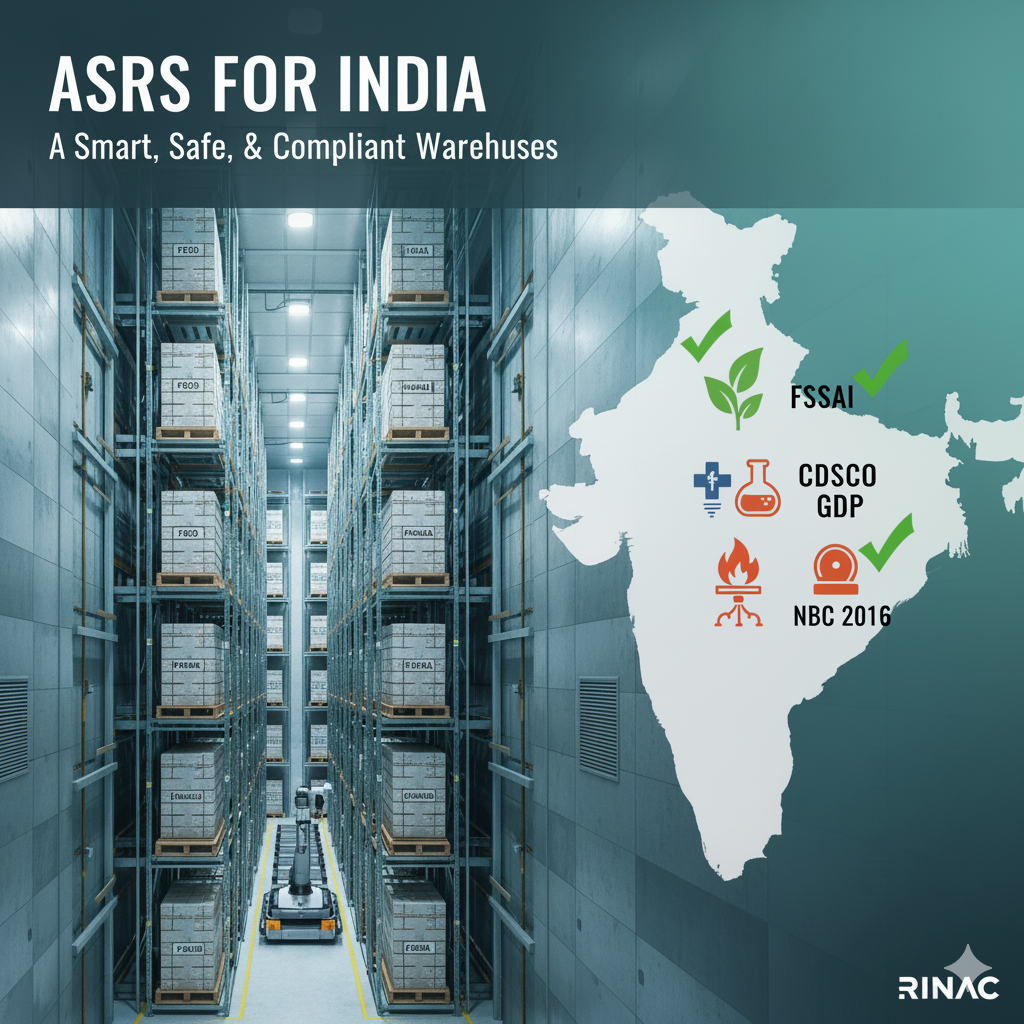Learn how RPUF insulated sandwich panels help keep interiors comfortable—year-round

Admin
September 7, 2025


September 7, 2025

If you operate in India, you already design for extremes: scorching summers, humid monsoons, and large day–night temperature swings in many cities. The Energy Conservation Building Code (ECBC) groups India into five climate zones—hot-dry, warm-humid, composite, temperate, and cold—so the building envelope has to work hard everywhere. Insulated panels are one of the simplest, most reliable ways to control heat flow across those conditions.
At RINAC, insulated sandwich panels with a rigid polyurethane foam (RPUF/PUR) core are engineered to help you achieve stable, comfortable interiors while supporting energy-efficient operations across applications—from cold rooms and food facilities to modular buildings, public amenities, and pharma spaces.
An insulated sandwich panel is a factory-made element with two metal facings bonded to an insulating core. In RPUF panels, the core is rigid polyurethane foam, a closed-cell insulation known for very low thermal conductivity—one reason it’s widely used where temperature control matters. Industry literature reports λ values for PUR/PIR foams in a low range that helps limit heat flow through walls and roofs.
On RINAC systems, panels are typically steel-faced (PCGI/PPGS), supplied in practical thicknesses for walls, roofs, and ceilings, with interlocking joints that help reduce thermal bridges and air leakage—key to maintaining comfort and efficiency.
1) They slow heat gain in summer and heat loss in winter.
Low-λ RPUF cores reduce conductive heat transfer, so AC loads fall in hot seasons and interiors stay closer to setpoint during cooler months. This aligns with ECBC’s emphasis on insulated, airtight envelopes tailored to climate zone.
2) They support airtightness—important in warm-humid and composite climates.
RINAC’s tongue-and-groove/slip-lock joints, when sealed, help limit infiltration that drives latent loads and discomfort. BIS standards for polyurethane sandwich panels (IS 16203) and foam (IS 12436) cover performance and test methods relevant to insulation quality and assembly.
3) They’re purpose-built for Indian applications.
RINAC panels are used across cold rooms, dry warehouses, clean food factories, public amenities, and prefab buildings—settings where stable interior conditions and quick installation matter.
4) Roof comfort matters—and RINAC has a dedicated solution.
For high solar gain roofs, RINAC’s CoolTop prefabricated roofing panels use an RPUF core between weather-resistant facings to help cut roof heat ingress and improve interior comfort.
Cold chain & food processing: Walk-in chillers/freezers and process areas where temperature stability is critical.
Clean modular construction: Pharma, electronics, and hygienic facilities using insulated wall/ceiling systems for controlled interiors.
Modular buildings & public amenities: Fast-deployable, insulated structures that remain comfortable across seasons.
Select thickness by duty & climate zone.
Typical panel families offer 30–150 mm thickness options; roofs often need higher insulation than walls in hot/composite zones. Your ECBC path (prescriptive or performance) will guide the envelope target.
Prioritise joints, sealants, and vapour control.
Properly sealed tongue-and-groove joints and correct vapour-barrier orientation reduce condensation risk and help AC systems run efficiently in warm-humid regions. BIS standards set out performance/testing for PUR/PIR foam and prefabricated PU sandwich panels used in cold applications.
Use roof panels designed for weathering.
For high solar exposure, choose insulated roofing assemblies like CoolTop that pair thermal performance with water-tight detailing and corrosion-resistant facings.
Document against Indian codes/standards.
ECBC provides the envelope performance framework, while BIS IS 12436 (PUR/PIR foam) and IS 16203 (prefabricated PU sandwich panels) provide material/assembly specifications frequently referenced in local projects.
Insulated PUF Sandwich Panels (walls/partitions/ceilings/roofs): Lightweight yet sturdy, easy to maintain, with thermal and sound insulation properties for a variety of industries.
InstaBuild® modular kits: PCGI-faced PUF systems with interlocking joints and zero-ODP foaming, available in multiple thicknesses for rapid, clean installations.
CoolTop® insulated roofing: RPUF core with weather-resistant skins, designed to reduce roof heat ingress and improve comfort.
Note: Actual thermal performance depends on design thickness, detailing, climate zone, and HVAC setpoints. For projects pursuing ECBC, IGBC, or GRIHA targets, our team can share product data sheets and typical details to support compliance documentation.
Share your climate zone and use-case (e.g., cold room vs. comfort-conditioned space).
Tell us wall/roof build-ups, target setpoints, and any code targets (ECBC/IGBC/GRIHA).
We’ll recommend a panel specification (thickness, jointing, accessories) and coordinate with your architect/MEP for airtightness and condensation control, drawing on our India-wide experience in modular, insulated envelopes.
Insulated PUF Sandwich Panels—specs & features.
InstaBuild® modular prefabricated sandwich panels.
CoolTop® insulated roofing brochure.
Ultimate guide to insulated sandwich panels (overview article).
ECBC 2017: India’s energy code with envelope requirements and climate-zone framework.
IS 12436:1988: Preformed rigid polyurethane (PUR) and polyisocyanurate (PIR) foams for thermal insulation—requirements & tests.
IS 16203:2016: Prefabricated polyurethane sandwich panels—specification.
Technical note on PUR/PIR low thermal conductivity.
Thinking about an upcoming project?
RINAC can help you pick the right RPUF panel configuration for your climate zone and application, coordinate envelope details with your team, and support your compliance paperwork—so occupants stay comfortable and your operations stay efficient.

September 29, 2025

September 24, 2025

September 13, 2025

September 7, 2025